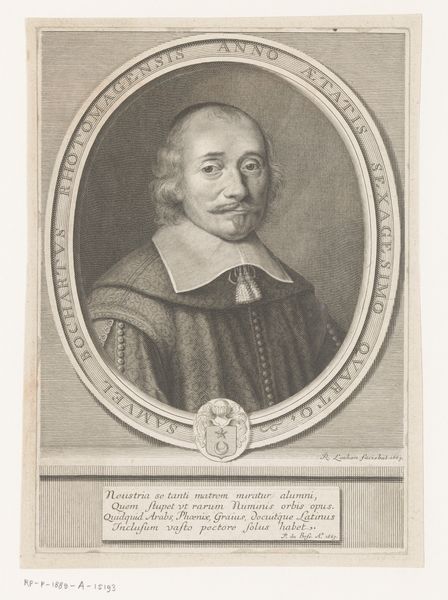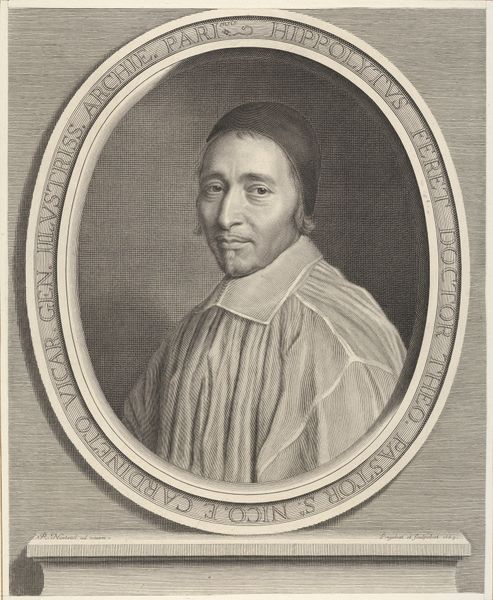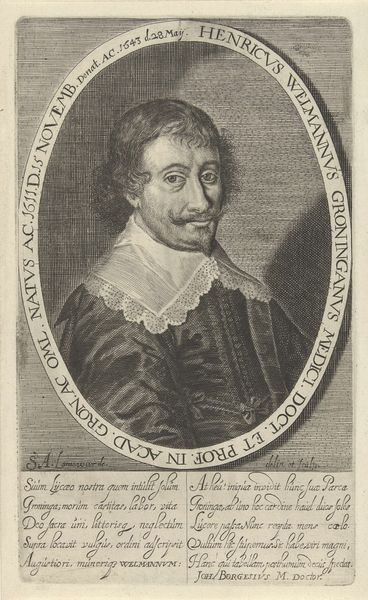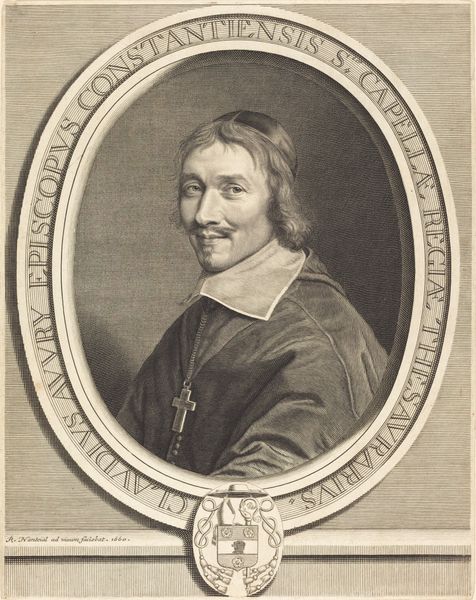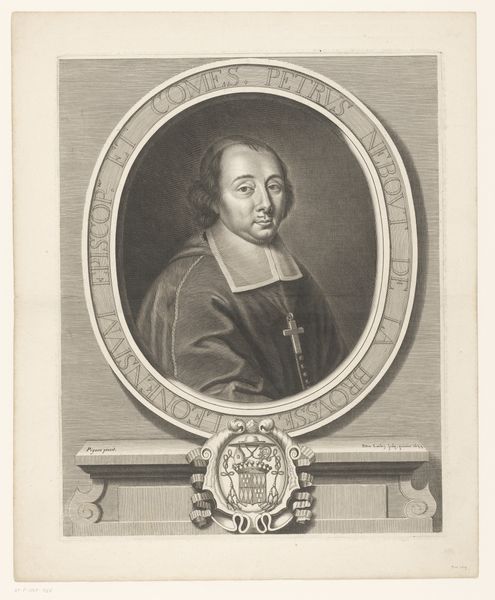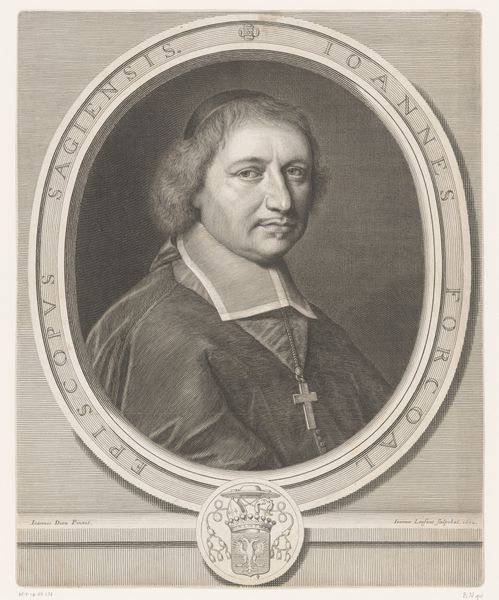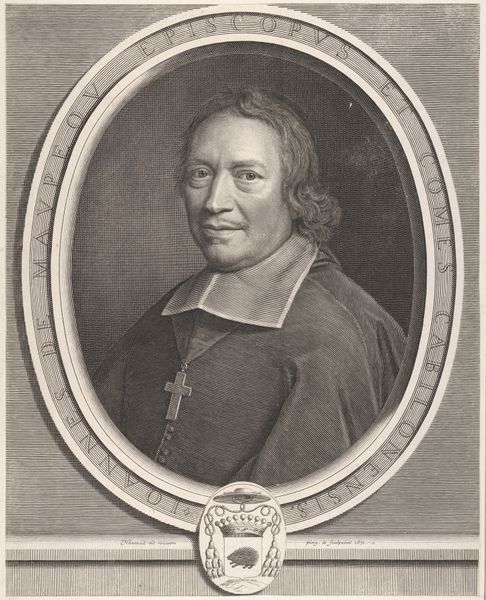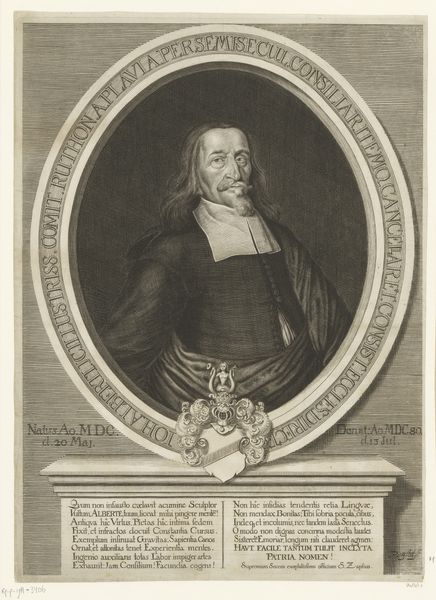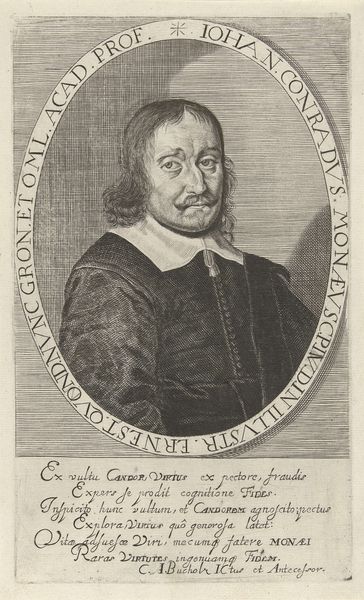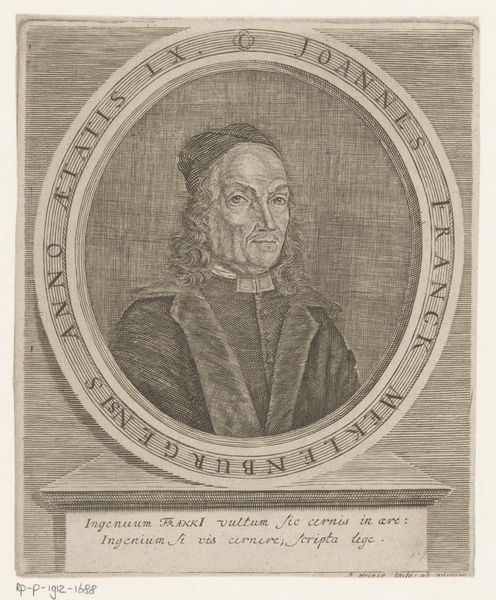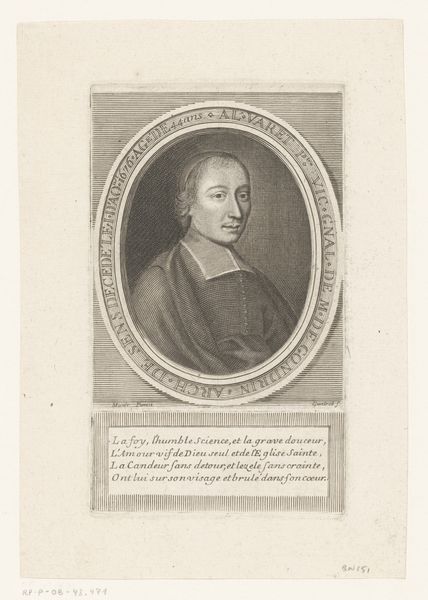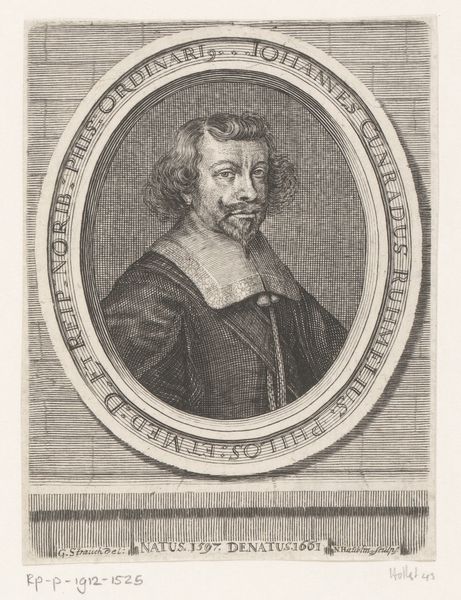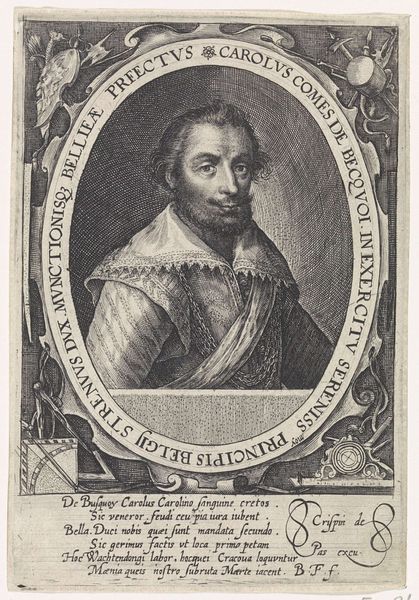
print, engraving
#
portrait
#
medieval
# print
#
engraving
Dimensions: 6 7/8 x 4 13/16 in. (17.46 x 12.22 cm) (image)
Copyright: Public Domain
Curator: This is Antoine Trouvain’s “Portrait of Hippolyte Feret,” an engraving from 1684. The print is currently in the collection of the Minneapolis Institute of Art. Editor: My first impression is that the subject's gaze projects a certain intelligence, despite the somewhat formulaic presentation. The oval format, combined with the linear inscription, feels rather formal and stiff, almost propagandistic. Curator: Well, such portraits of religious figures served very specific social functions. In 17th century France, during the reign of Louis XIV, the Church played a significant role, politically and culturally. These images, particularly those reproduced as prints, served to disseminate the image and ideology of prominent religious leaders. Editor: Indeed, if we consider Feret’s role within the Parisian Church hierarchy, one can perceive his alignment with centralized power structures. But consider the materiality of printmaking here. This engraving, as a reproductive medium, made this image accessible beyond the elite, and might have reached lower clergy members as a sign of respect and obedience. This aligns, of course, with religious art's historic accessibility and appeal to different socio-economic backgrounds. Curator: Yes, and look at the text. It emphasizes Feret's piety, his role as an exemplar, a protector of canonical discipline, and his unwavering obedience to the Holy See. The very Latin chosen speaks to a certain audience while potentially excluding others. One wonders how Feret navigated tensions within the Parisian clergy during this era and whose agendas his representation serves. Editor: It prompts the question of image ownership and how depictions influence perceptions of authority and faith. I see an intriguing power dynamic displayed—one of carefully manufactured religious leadership, but ultimately reliant upon accessibility to reinforce this same ideology across diverse demographics. Curator: I agree. Considering such complexities transforms how we understand such a seemingly straightforward portrait, from mere representation to complex social communication. Editor: It reveals how something seemingly static can generate so much interpretive richness about cultural values.
Comments
No comments
Be the first to comment and join the conversation on the ultimate creative platform.
